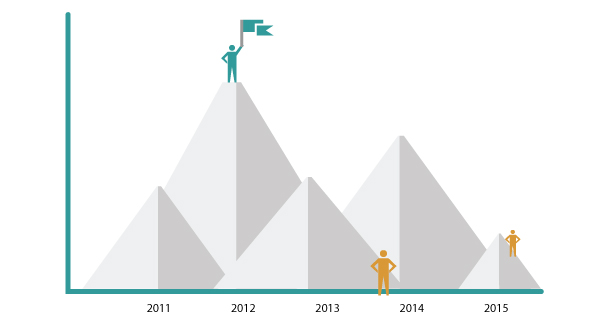
Macro Environmental Analysis
How-to Write a Strategic Marketing Plan that Yields ROI • Part 4 of 9
Contents
The bigger macro trends that impact your company on a grander scale
A lot of the analysis spends time looking inwards at your company – instead of the bigger macro trends that impact your company on a grander scale. Macro trends have the ability to take down even the largest multi-billion organizations including McDonalds, Blockbuster Video and national newspaper chains. Each of these organizations reacted as the trend was well underway, instead of planning ahead. Attempts to adjust with the times were done too late. And worst of all, these organizations may have been able to prevent the huge losses they incurred.
That is why it’s vital to keep upcoming trends in mind and learn from the past. That will provide us, at the very least, warning. Best case scenario, you have time to be proactive rather than reactive. If McDonald’s had foreseen the movement towards healthier and more transparent options, they might have been able to keep their strong brand presence. Instead, their campaigns are reactionary and therefore it takes a bigger effort to convince people they have healthy choices.
For one of our clients, their neighbourhood was changing and it was imperative that our campaign aligned with those changes. At the time, we were devising the marketing plan, the City of Vancouver was putting together the Local Area Planning Process to map out the future of the neighbourhood. In doing so, a lot of the conversation in the news about the area was negative. Our campaign concept had to take into consideration the climate it was being brought up in. We had to be cognizant of the current conversations which helped us to ensure that our campaign didn’t contradict or offend any stakeholders. It helped us understand the context and leverage the timing of the changes to shape the conversation we wanted to have with the public. The timeliness of our campaign actually leveraged the media interest in the area but steered the conversation in the direction we wanted – the thriving business community.
Who should be in this one
The C-Level and upper management who have a good overview of where the company sits in the industry. Individuals on your team who are passionate and curious about your industry are also valuable assets to this team, as it provides more context to where your organization sits within the field. This is also a great opportunity to look for information that can contribute to your annual goals and concepting.
Historical
What are the major milestones in the history of your organization? What helped shape your organization into what it is today?
This section really helps us to see how the organization grew, what major impacts can affect it and what are the reactions and ways it reacted to it. It helps provide perspective fo future impacts and how the organization might maneuver around these larger trends. These historical insights provide us with lessons to learn from and use to our advantage.
Upcoming Trends
These are general trends, both across and within your industry. They are the larger tornados that could impact your company. It’s important to spend a bit of time looking at these just to ensure that all the work we put into the plan isn’t swept aside.
Upcoming Direct Impacts
These are future impacts that you know will affect your organization in the next two years. The ones we will definitely need to work with and should consider as we develop the marketing plan.
Research
After you’ve gathered information from your team, begin to do the industry research. There is no such thing as too much research – the reality is that it’s tough to predict what information will provide the most value without looking at what it produces. If you don’t have access to hire a research firm, then for starters, check these out:
- Leading Industry Papers
- Leading Industry Experts
- Statistics
- AC Neilson
- Stats Can
- Higher Education
- Non Profits
APPLICATION
This part of the marketing plan is to provide context to the plan – it shows where the plan sits in greater context. This part of the plan will be referenced to ensure it aligns with this. Once you’re done the annual goals, refer back to this section to make sure it takes into account these trends and potentially leverages them.
Check out all our posts in this series!
 |  |
 |  |
 |  |
 |  |
 |






